 W
WThe Bengali Renaissance or simply Bengal Renaissance, was a cultural, social, intellectual and artistic movement in Bengal region in the eastern part of the Indian subcontinent during the period of the British Indian Empire, from the 19th century to the early 20th century dominated by Bengali Hindu community.
 W
WThe culture of Bengal defines the cultural heritage of the Bengali people native to eastern regions of the Indian subcontinent, mainly what is today Bangladesh and the Indian states of West Bengal, Tripura and Assam's Barak Valley, where the Bengali language is the official and primary language. Bengal has a recorded history of 1,400 years. The Bengali people are its dominant ethnolinguistic tribe. The region has been a historical melting point, blending indigenous traditions with cosmopolitan influences from pan-Indian subcontinental empires. Bengal was considered to be the richest part of Islamic medieval India and during the era of the Bengal Sultanate it was described to be a major trading nation in the world, while during Mughal times, having triggered the proto-industrialization, its economy was worth 12% of global GDP. As a part of the Bengal Presidency, it also hosted the region's most advanced political and cultural centers during British rule.
 W
WAlkap is a form of Bengali folk performance popular in the districts of Murshidabad, Malda and Birbhum in West Bengal and Chapai Nawabganj, Randajshahi in Bangladesh. It has also spread to the adjoining areas of Jharkhand and Bihar such as Dumka and Purnia.
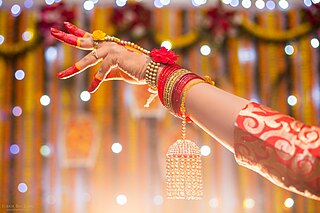 W
WAlta, alah or mahavar is a red dye that is applied to the hands and feet of women, mainly in the Indian subcontinent. It is applied with a cotton swab or brush to the hands and feet during marriage ceremonies and festivals.
 W
WArchitecture of Bangladesh is intertwined with the architecture of the Bengal region and the broader Indian subcontinent. The architecture of Bangladesh has a long history and is rooted in Bangladesh's culture, religion and history. It has evolved over centuries and assimilated influences from social, religious and exotic communities. The architecture of Bangladesh bears a remarkable impact on the lifestyle, tradition and cultural life of Bangladeshi people. Bangladesh has many architectural relics and monuments dating back thousands of years.
 W
WBangladeshi art is a form of visual arts that has been practiced throughout the land of what is now known as Bangladesh. Bangladeshi art has a perennial history which originated more than two thousand years ago and is practiced even to this date. Among the various forms of Bangladeshi art, photography, architecture, sculpture and painting are the most notable.
 W
WBangladeshi cuisine is the national cuisine of Bangladesh. Bangladeshi cuisine has been shaped by the diverse history and river-line geography of Bangladesh. The country has a tropical monsoon climate.
 W
WPersonal names in Bengali-speaking countries consist of one or several given names and a surname. The given is usually gender-specific. A name is usually cited in the "Western order" of "given name, surname". Personal names may depend generally on the person's religion and also have origins from other languages like Arabic, Persian, Sanskrit and Pali, but they are used and pronounced as according to the native Bengali language.
 W
WA Bengali Muslim wedding includes many rituals and ceremonies that can span several days. In most cases, it starts with the Paka Dekha ceremony and ends with the Bou Bhat ceremony.
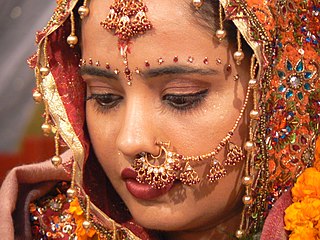 W
WA bindi is a coloured dot worn on the centre of the forehead, originally by Hindus and Jains from the Indian subcontinent. The word bindu dates back to the hymn of creation known as Nasadiya Sukta in the Rigveda Mandala 10. Bindu is considered the point at which creation begins and may become unity. It is also described as "the sacred symbol of the cosmos in its unmanifested state".
 W
WBanbibi, the lady of the forest, also Bandevi, Bandurga and Byaghradevi is a guardian spirit of the forests venerated by both the Hindu and the Muslim residents of the Sundarbans. She is called upon mostly by the honey-collectors and the woodcutters before entering the forest for protection against the attacks from the tigers. It is believed that the demon king, Dakkhin Rai, an arch-enemy of Banbibi actually appears in the disguise of a tiger and attacks human beings.
 W
WDhaka is the most populous city of Bangladesh and is characterized by its busy urban life with vibrant and versatile culture including many festivities, variety of cuisine, entertainment industry, shopping experience and sites of interests.
 W
WDakshin Ray is a revered deity in the Sundarbans in India and Bangladesh who rules over beasts and demons. He is regarded as the overall ruler of the Sundarbans. The God is worshiped by all those who enter the Sunderban forests of West Bengal, for subsistence, irrespective of their caste, creed or religion.
 W
WDhakis are traditional drummers who play the dhak (drum) during Hindu festivals, primarily in Bengal. Drum beats are an integral part of the five-day-long annual festivities associated with Durga Puja but dhakis are losing out to pre-recorded CDs and cassettes.
 W
WDhamail, variant of Dhamal, is a form of folk music and dance originated in Sylhet, Bangladesh. It is practiced in the erstwhile sylhet Division in Bangladesh and in areas influenced by the Sylheti culture such as Cachar, Karimganj and Hailakandi Districts of Assam, parts of Tripura and parts of Shillong, India. It accompanies the use of mirdanga, kartals and many other musical instruments which are usually played by the males while the dance is being performed. This dance form is similar to musical chairs, where one by one the dancers are removed by the dancers who can dance very fast as the beats gear up the speed. This dance form mainly relates the love of Radha and Krishna and the inner significance of this dance form is that the newly wedded couple must unite their souls in such fashion.
 W
WGhatu, Ghetu Gaan, or Ghetu Song is a type traditional cultural song of the Eastern Part of the Bangladesh. The songs were traditionally sung during the monsoon season, though the tradition is on the decline. The festival was mainly held in north-eastern side of Mymensingh and lower part of Sylhet in Bangladesh.
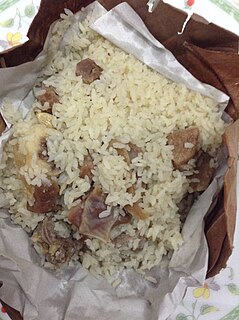 W
WHaji biryani is one of the oldest restaurants in the heart of Old Dhaka Bangladesh, selling chevon biryani. The restaurant also sells borhani and soft drinks. In 1939 the restaurant was started as a roadside food corner by a person named Haji Mohammad Hossain. Later on the business took dramatic change and became part of the culture of Dhaka city.
 W
WJagaddala Mahavihara was a Buddhist monastery and seat of learning in Varendra, a geographical unit in present north Bengal in Bangladesh. It was founded by the later kings of the Pāla dynasty, probably Ramapala, most likely at a site near the present village of Jagdal in Dhamoirhat Upazila in the north-west Bangladesh on the border with India, near Paharapur. Some texts also spell the name Jaggadala.
 W
WJatra is a popular folk-theatre form of Odia theatre, Bengali theatre, spread throughout most of Odia, Bengali speaking areas of the Indian subcontinent, including Bangladesh and Indian states of Odisha, West Bengal, Bihar, Assam and Tripura As of 2005, there were some 55 troupes based in Calcutta's old Jatra district, Chitpur Road, and all together, jatra is a $21m-a-year industry, performed on nearly 4,000 stages in West Bengal alone, where in 2001, over 300 companies employed over 20,000 people, more than the local film industry and urban theatre.
 W
WKavigan, Kobi Gaan, Kobi Lorai or Kabigan is a form of Bengali folk performance wherein folk poets sing and perform. A verbal duel among the poets, this mystic minstrels art was popular with rural folk form in nineteenth century in Bengal region, which includes the Indian state of West Bengal and Bangladesh.. The mythological themes from both Hindu and Muslims religious texts were commonly used for Kobi Gaan.
 W
WLalon also known as Fakir Lalon Shah, Lalon Shah, Lalon Fakir was a prominent Bengali philosopher, author, Baul saint, mystic, songwriter, social reformer and thinker in British India. Regarded as an icon of Bengali culture, he inspired and influenced many poets, social and religious thinkers including Rabindranath Tagore, Kazi Nazrul Islam, and Allen Ginsberg although he "rejected all distinctions of caste and creed".
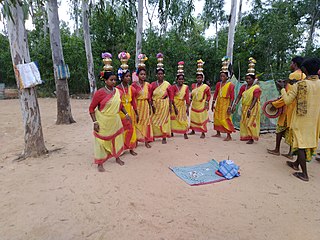 W
WThe Lungi Panchi Dance is a traditional dancing style of the Santal people of West Bengal. This dance is performed by both men and women and is accompanied by traditional music.
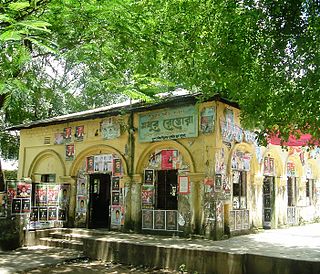 W
WMadhur Canteen is a familiar name in the history of the Dhaka University as well as in the national politics of Bangladesh because of its association with various political movements which originated from the Dhaka University. The canteen's current location holds important architectural and heritage value.
 W
WThe Ministry of Cultural Affairs is a ministry of the Government of People's Republic of Bangladesh, in charge of national museums and monuments; promoting and protecting the arts in Bangladesh and managing the national archives. The Ministry of Cultural Affairs is also charged with maintaining the Bengali identity.
 W
WNobanno is a Bengali harvest celebration usually celebrated with food and dance and music in Bangladesh and in the Indian states of West Bengal, Tripura and Assam's Barak Valley. It is a festival of food; many local preparations of Bengali cuisine like pithe are cooked.
 W
WNazrul Geeti or Nazrul Sangeet, literally "music of Nazrul", refers to the songs written and composed by Kazi Nazrul Islam. Nazrul Geeti incorporate revolutionary notions as well as more spiritual, philosophical and romantic themes. Nazrul wrote and composed nearly 4,000 songs, which are widely popular in Bangladesh and India. Some of the most notable Nazrul Geeti include Notuner Gaan, the national marching song of Bangladesh and O Mon Romzaner Oi Rozar Sheshe, an Islamic song on the festival of Eid-ul-Fitr.
 W
WA Paan Dan or Faandan is a container for storing paan used in South Asian households. It also stores other ingredients such as zarda, supari, kattha, choona, clove, cardamom (elachi), and other accessories. A paan dan is silverware used mostly to store betel leaf, betel seeds and most other spices for making a paan. A paan dan is often made of perforated metal and has several compartments for storing the individual ingredients for making paan.
 W
WPahela Baishakh or Bangla Noboborsho is the first day of Bengali Calendar. It is celebrated on 14 April as a national holiday in Bangladesh, and on 14 or 15 April in the Indian states of West Bengal, Tripura and Barak Valley region of Assam by people of Bengali heritage, irrespective of their religious faith.
 W
WPohela Falgun, also known as the first day of Spring of the Bengali month Falgun, is a holiday celebrated in Bangladesh. The celebration was started in 1991 by students of Dhaka University's Faculty of Fine Arts. The first of Falgun usually falls on 13 February of the Gregorian Calendar. The holiday in Bangladesh also celebrated as Basanta Utsab,
 W
WRabindra Sangeet, also known as Tagore Songs, are songs from the Indian subcontinent written and composed by the Bengali polymath Rabindranath Tagore, winner of the 1913 Nobel Prize in Literature, the first Indian and also the first Asian to receive such recognition. Tagore was a prolific composer with approximately 2,232 songs to his credit. The songs have distinctive characteristics in the music of Bengal, popular in India and Bangladesh.
 W
WSculpture has been an indispensable part of Bangladeshi culture, historically part of the art of Bengal and Indian art. Bengal was at times an important centre influencing stone sculpture in the Indian subcontinent, especially in the post-Gupta and medieval periods. Terracotta reliefs are a particular local characteristic of Hindu temples and mosques in recent centuries.
 W
WSheikh Kamal International Stadium, also known as Cox's Bazar Cricket Stadium, is a newly developed cricket stadium in the tourist town of Cox's Bazar, Bangladesh.
 W
WSitalpati, also called sital pati and sittal pati, is a kind of mat which feels cold by nature. It is made from murta plants. It is usually used in Bangladesh.Mats with decorative designs are called nakshi pati.
 W
WSnake charming is the practice of appearing to hypnotize a snake by playing and waving around an instrument called a pungi. A typical performance may also include handling the snakes or performing other seemingly dangerous acts, as well as other street performance staples, like juggling and sleight of hand. The practice was historically the profession of some tribesmen in India but this is no longer the case. Snake-charmer performances still happen in other Asian nations such as Pakistan. Bangladesh, Sri Lanka and south-east Asian nations like Thailand and Malaysia are also home to performers, as are the North African countries of Egypt, Morocco and Tunisia.
 W
WTant sari is a traditional Bengali sari, originating from the Bengal region in the eastern part of the Indian subcontinent, and usually used by Bengali women. It is traditionally made by the weavers from almost all over Bangladesh and the Indian states of West Bengal, Tripura, and Assam's Barak Valley, but typically few places like Dhaka, Tangail, Narayanganj of Bangladesh and Murshidabad, Nadia, Hooghly of West Bengal are famous for tant sari weaving. Tant sari are woven from cotton threads and distinguished by its lightness and transparency. It is considered to be the most comfortable sari for the hot and humid climate in the Indian subcontinent.
 W
WTheatre in Bangladesh is believed to have its origin in the 4th century AD in the form of Sanskrit drama. The conquest of Bengal by the Gupta dynasty led the ingress of the northern Indian culture into the ancient Bangladeshi culture which eventually introduced the tradition of theatre in Bangladesh. At present, apart from the Sanskrit theatre, the influence of the European theatre and the indigenous folk culture can also be seen in the theatre art of Bangladesh.
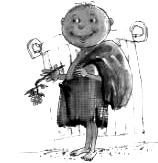 W
WTokai, transliterated as Tokaii, is the longest survived cartoon character of Bangladesh, is a creation of Rafiqun Nabi or Ronobi, as he is widely known. Tokai, a street urchin of age below ten, is not only a character, it is a phenomenon in Bangladesh, acting as a witty outlet of the feelings of the people about current political and socio-economic condition of the nation. In fact the word tokai has become the colloquial synonym for street kids or dumpster divers in Bangladesh. Having bald head and pot-belly, Tokai became a national asset of Bangladesh. People love Tokai because he reflects their own thoughts in a simple yet witty manner. Tokai, who represents the most deprived people in the society, is the most loved cartoon character in Bangladesh.
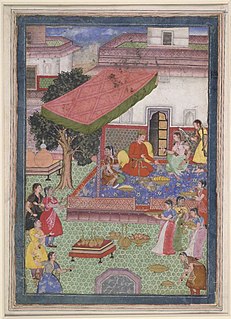 W
WZenana literally meaning "of the women" or "pertaining to women," in Persian language contextually refers to the part of a house belonging to a Hindu or Muslim family in the Indian subcontinent which is reserved for the women of the household. The zenana are the inner apartments of a house in which the women of the family live. The outer apartments for guests and men are called the mardana. Conceptually in those that practise purdah, it is the equivalent in the Indian subcontinent of the harem.